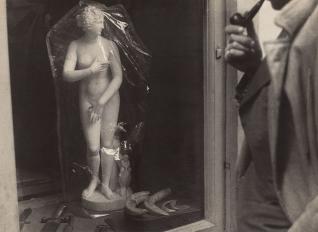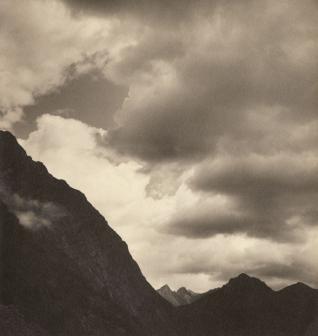From 1924 to 1962, Théodore Blanc and Antoine Demilly ran one of Lyon’s best known studios. They were renowned for their portraits and dedicated their lives to photography, sharing their time between traditional commercial photography and their inventive and fertile creative work.
For over forty years, Antoine Demilly’s daughter has been gathering together the work of her father and his partner that was dispersed or thrown out once the studio closed down in 1962. Conservation was not on the cards at the time; photography was not high on the list of priorities of French institutions, and even less so the work of a seemingly banal local studio. The task was immense as Blanc and Demilly were prolific. Thousands of portraits were produced in their studio where the bourgeoisie of Lyon were regulars, as were the avant-garde artists. The photographers’ personal work was just as consequential. The variety of subjects, now often unidentified, bear witness to the eclectic taste of the two partners who, even though they often worked separately, always refused to disassociate their names.
This exhibition presents a part of this collection reconstituted as it was. The original prints are difficult to date due to damage over time and lack of care. The thirties blend into the fifties, united in the same quest for iconographical poetry.
Blanc and Demilly loved beautiful pictures and were conscious of progress so they varied their expressions, going from a pictorialist tendency to the vocabulary of the “Nouvelle Vision”. Their early adoption of the Rolleiflex and the Leica which were so easy to handle, provided them with a freedom of movement that was heretofore unimaginable. They paced the streets of Lyon, the banks of the Saône, the mountains and the surrounding countryside where they often brought groups of amateur photographers, sharing their passion.
While the activity of the studio concentrated for the most part on portraits that they modernised by removing background décor, their curiosity and taste for experimentation pushed them to other subjects, from the most poetic to the most formal. Blanc and Demilly were in favour of multiple perspectives, all subject to emotion. To grasp life at its most picturesque, most unexpected, the subject could be slight, a shadow with clean lines expressed with a simple, almost abstract composition, thus making it beautiful as if the banal were being elevated to the metaphorical. They revealed latent objects, shapes in strange light and the mist of the early morning or of twilight. These “atmospheric” simulacra were filters. They force the viewer to go beyond the raw reality of things to attain a certain visual poetry. The eye is required to lose itself in the image.
These photographs are at times disconcerting. Blanc and Demilly appear to collect locations of a “new world” whose history we do not need to know. Things that are only expressed in wanderings or solitude are silently hidden there.
But this apparent eclecticism does not mean dispersion. Each image confirms that by going beyond simple vision, we can see all of its mystery and beauty for ourselves. For Blanc and Demilly, that which is accessible to the senses gives life to a certain truth. The photographs record and transmit vibrations, indeterminate moments of the sensuality of the world. They are reflections. From one image to the next, we come onto something new. Photographic wanderings, between objects, portraits and landscapes are but a vagabond and unruly practice for the eye. Photographic modernity provides us with the possibility of multiplying our viewpoints, that is to say the experiences of a “new world”, an exploration of the near that is also a question of self-knowledge.
The photos in the exhibition come from the Julie Picault-Demilly collection.
The exhibition is co-produced with Stimultania
, photography centre.
Each year, Stimultania programmes exhibitions, residencies, mediations, concerts and various cultural events.
The exhibition coincides with the publication of a book:
Blanc et Demilly, le nouveau monde
Texts ; François Cheval, Céline Duval and Xavier Fricaudet
Lieux Dits Editions, Lyon, 2015
120 pages - 85 ill.
ISBN : 9782362191183
27,00 €

Blanc and Demilly: a timeline
Théodore Blanc (1891 – 1985)
Antoine Demilly (1892 – 1964)
1924 : Théodore Blanc and Antoine Demilly become partners under the name “Blanc et Demilly” and take over the studio of their father-in-law Edouard Bron, a portraitist and photographer in Lyon.
1933 : They take part in the “L’image photographique de Daguerre à nos jours” exhibition at the Braun gallery in Paris.
1933 – 1936 : Aspects de Lyon : 121 helio-engravings gravures in ten volumes.
1935 : They make a splash with the inauguration of one of the first galleries dedicated to photography. They show their own work as well as that of amateur photographers.
1938 : They win the gold medal for Portraits during the 15th photo and cinema exhibition in Paris.
1942 : Charme de Lyon , is published, illustrated with twenty-seven of their photos.
1947 : They show their work for the first time at the Salon national de la photographie at the Bibliothèque nationale. They continued to take part until 1959.
1951 : The gallery closed.
1962 : The Blanc et Demilly studio is sold after a few declining years. The collection of prints was dispersed.






